NHRA TRACK PREP CONCERNS
Mon, 2007-06-25 13:56
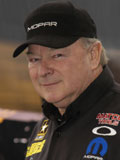 Last year the great divide between the racers and the NHRA was the timing
system. This season’s hot topic (literally) is track prep. During Saturday’s
qualifying the NHRA applied traction compound from the starting line for several
hundred feet out and ceased. They resumed from the finish line and several
hundred feet toward the starting line and ceased. The mid-range of the track was
left as is.
Last year the great divide between the racers and the NHRA was the timing
system. This season’s hot topic (literally) is track prep. During Saturday’s
qualifying the NHRA applied traction compound from the starting line for several
hundred feet out and ceased. They resumed from the finish line and several
hundred feet toward the starting line and ceased. The mid-range of the track was
left as is.Many fuel teams smoked the tires at that point and a few made it to the finish line. Those who didn’t make a full pull outweighed those who did. The second-guessing ran rampant in the fuel pits as the teams wondered where the consistency they had enjoyed in years prior had gone.
Dan Olson of the NHRA had an explanation why the sanctioning body did what they did on Saturday. Olson said the track temperatures climbed as high as 136.
“We did that because it wasn’t so much over-sprayed as it had gotten soft out there,” Olson said. “If we had sprayed it any more there would have been a track problem. There was a little section that we didn’t spray on purpose because it was coming apart and coming up. The rubber was tearing loose the asphalt.”
 Last year the great divide between the racers and the NHRA was the timing
system. This season’s hot topic (literally) is track prep. During Saturday’s
qualifying the NHRA applied traction compound from the starting line for several
hundred feet out and ceased. They resumed from the finish line and several
hundred feet toward the starting line and ceased. The mid-range of the track was
left as is.
Last year the great divide between the racers and the NHRA was the timing
system. This season’s hot topic (literally) is track prep. During Saturday’s
qualifying the NHRA applied traction compound from the starting line for several
hundred feet out and ceased. They resumed from the finish line and several
hundred feet toward the starting line and ceased. The mid-range of the track was
left as is.Many fuel teams smoked the tires at that point and a few made it to the finish line. Those who didn’t make a full pull outweighed those who did. The second-guessing ran rampant in the fuel pits as the teams wondered where the consistency they had enjoyed in years prior had gone.
Dan Olson of the NHRA had an explanation why the sanctioning body did what they did on Saturday. Olson said the track temperatures climbed as high as 136.
“We did that because it wasn’t so much over-sprayed as it had gotten soft out there,” Olson said. “If we had sprayed it any more there would have been a track problem. There was a little section that we didn’t spray on purpose because it was coming apart and coming up. The rubber was tearing loose the asphalt.”
Olson said the intent was to preserve the track. He said this was a decision that had to be made on the spot. Olson said it was done only for the final session.
“We adjust to what we have to adjust to; it’s the same thing the teams do when they tune their cars,” Olson said. “When you have a problem area, you have to fix it.”
Olson said his decision was made on his prior experience as a tuner. His previous job before joining the NHRA as the liaison for fuel racing was with Don Schumacher Racing.
“I’ve been doing this 40 years and this isn’t my first day on the job,” Olson said. “I know the way I would have wanted the track prepped and that’s what we tried to do now. In going through and talking with the crew chiefs today [Sunday], they were pleased with the temperature of the track and the results they were getting. There were a lot of good runs yesterday.
“The Pro Stock track record was set on Saturday. In the heat of the day there was a pass of 6.62 made. The Top Fuel cars ran low 4.60s and the good Funny Cars were running 4.80s. What can I say?”
During Saturday’s qualifying only two Funny Cars reached the 4.80-something zone but the Top Fuel division produced a number of 4.6-second laps and a few 4.5s. By the second session, only four could manage a 4.6. The common theme for those cars was smoke in the mid-range.
On the flipside, Pro Stock Motorcycle rider Angelle Sampey nailed the class elapsed time track record and Greg Anderson secured the Pro Stock track record under similar conditions to what the nitro cars encountered.
“I think for the conditions we have, as a whole, the track is as good as we know how to make it,” Olson said. “Our crew is working harder on the track than they ever have to keep the bald spots covered and do the spray and everything we do.”
With Olson’s assessment of the track deterioration, one has to wonder whether this is a track surface issue or the preparation thereof.
“I think it is more of a temperature issue,” Olson said. ‘You drop the temperature 20 or 30 degrees and they have a mineshaft here. When the conditions change, you have to as well. That’s the difference in the good crew chief and those that aren’t so good.”
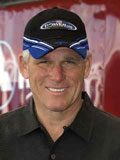 Jim Head has always been close to the track prep issue. His son
Chad was responsible for the task prior to his defection to the Indy Racing
League.
Jim Head has always been close to the track prep issue. His son
Chad was responsible for the task prior to his defection to the Indy Racing
League.Head is one of the drivers who feel that no matter the prep, a track that exceeds 100 degrees is only going to have so much value in the big picture of quick and fast runs.
“I’m a huge believer of track temperature being the controlling issue,” Head said. “A 100-degree track will never be better than an 80-degree track. A 120-degree track will never be better than a 100-degree one. No matter what the NHRA does, we run on a thin surface of rubber.
“I hear the debate of spraying the track and I think Chicago was just the case of guys trying to run too hard. I think Saturday morning was no better than we had in Chicago. The dragsters adjusted nicely and the Funny Cars stumbled both times.
“I don’t really have any issues because I think the NHRA tries really hard. Sometimes they have a consistency problem. Dan Olson is doing the best he can to solve the track prep dilemma. No one can try harder than he is. He will get them eventually as best as he can. He can’t fix a 125-degree race track.”
Gary Scelzi questioned the track prep in Chicago and the consistency of it during his post-qualifying press conference. He even called for the NHRA to bring back Chad Head to improve what many see as a consistency dilemma. Sunday brought forth a change for Scelzi. He was convinced the NHRA made a change.
“The track was better today than it had been all weekend,” Scelzi said. “Nobody can tell me they didn’t do things differently today. They did something different.
“Kudos to the NHRA -- whatever you did -- whether you admit it or not, good job on what you did. We didn’t just get smart today.”
Olson said the prep was identical.
“They
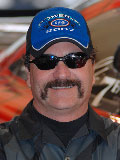 prepped the
track identical to Saturday on Sunday,” Olson said. “We didn’t change anything.
I think what happened is that we had never been in Chicago that late in the year
and we had track temperatures different that what we were used to in racing
there. Most of those guys had the typical Chicago tune-up and it was too much
for that time of the year.
prepped the
track identical to Saturday on Sunday,” Olson said. “We didn’t change anything.
I think what happened is that we had never been in Chicago that late in the year
and we had track temperatures different that what we were used to in racing
there. Most of those guys had the typical Chicago tune-up and it was too much
for that time of the year. “Once they backed up and had a handle on the warm conditions, they were getting down the track. We did not change a thing.”
Head admits his comments might not appeal to his tuning comrades, but can’t help but think the racers should shoulder some of the blame.
“Most pedal-fests are created by pedal-fest tuners,” Head said. “I smoke the tires because I smoke the tires usually. It’s really rare when that track makes me smoke the tires. It’s a drag race; we are all trying to run 0 to 390. Some tracks won’t allow you to run 390.”
The Chicago and Englishtown scenarios produced equal results for both lanes.
“I am distraught when the media or anyone talks about differences in lanes,” Head said. “If they gave lane choice to the slower car you would see fast cars still win in the lane not of choice. The reason there is an issue in the first round is all the fast cars take one lane or the other. Fast cars usually beat slow cars.
“It offends me when people talk about race tracks they can’t get down. If I thought there was a chance during a weekend that I would get put in a lane that I couldn’t get down, I wouldn’t do this. Why would I come out here and spend my money if I thought the NHRA would put me on a surface that I couldn’t do anything with.”
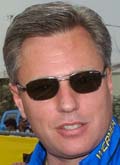 It’s not a matter of how the track is prepped, according
to tuner Mike Kloeber. It’s communication that is the key issue for
him.
It’s not a matter of how the track is prepped, according
to tuner Mike Kloeber. It’s communication that is the key issue for
him.“The NHRA is going to do the best they can and there’s no set formula for what to do,” Kloeber said. “When you work on the track, it is a day-by-day, case-by-case basis. I would prefer more communication from the sanctioning body on what they are doing so that we can understand and adjust our cars accordingly. It doesn’t have to be open for debate, just tell us what they are doing so we can make the race car work with the conditions.”
Case in point, Kloeber said, knowing they declined to spray the mid-point would have been good to know on Saturday.
“We had a set up that was no going to tolerate the track not being as good as it was in the third,” Kloeber said. “The good part is we learned some boundaries. We’ll just have to pay attention to where they are or not working on the track.”
Olson said that notification of the teams is not always an option because a lot of the decisions happen on the spot and there’s just not enough time to go down the line and notify all. His decision of less glue was made on the spot.
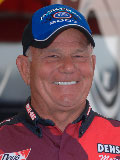 Glue or no glue, seasoned
veteran Gary Densham says the key issue is being overlooked – the
tire.
Glue or no glue, seasoned
veteran Gary Densham says the key issue is being overlooked – the
tire.“I believe the NHRA is doing a good job on the track and it could be better during the day, but if they get more aggressive at night, we stand the chance of chunking tires,” Densham said. “They are trying to make it safe for us so cars can run well on Friday night. Then we come out here on Saturdays and find out that while the tire may be safer, it is more temperature sensitive.
“Our older tire – we could come out an run a 4.75 on a 90-degree track and still come back out on a Saturday and run a 4.80 on a 110 – 120 degree track. The tire we have now is just too temperature sensitive now.”
Olson said it all comes down to track temperatures and it’s not a matter of under or over prep.
“When it’s this warm, you have no tire issues – even on Friday night,” Olson said. “We do have to be concerned with the tire issues because we don’t want to hurt anyone out here.”
Categories:




































